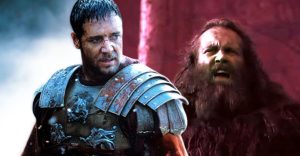Doki Doki Panic Explained: What Super Mario Bros. 2 Really Was

Many Mario fans recognize Super Mario Bros. 2 as the game that significantly changing up the gameplay from the smash NES hit, Super Mario Bros. Many fans also know that this is because Super Mario Bros. 2, at least the version released in North America, is a reskinned version of a Japanese game, Doki Doki Panic. This fact has long persisted as a popular piece of Mario trivia, but when it comes to Doki Doki Panic, the discussion usually stops short of any details about the original game. Here are some important key facts to know about the odd game that has had such a huge impact on the Mario franchise.
Doki Doki Panic is actually a truncated name, with the game’s proper title being Yume Kōjō: Doki Doki Panic. The words “Doki Doki” represent the Japanese sound effect for a heartbeat, typically used when someone is going through stress or, well, panic. This phrase has become more common in popular culture, as evidenced by the game Doki Doki Literature Club including it in its title as well. “Yume Kōjō” translates to “Dream Factory”, and takes its name from the massive Yume Kōjō ‘87 convention, hosted by Japanese television channel Fuji TV to promote their new lineup of shows.
According to a 2011 WIRED interview with Kensuke Tanabe, Fuji TV collaborated with Nintendo to create Doki Doki Panic using the convention’s official mascots as the game’s main characters, but transitioning Doki Doki Panic into Super Mario Bros. 2 for an American release was not as complicated as one might think. It was developed by Nintendo R&D4, the same team responsible for Super Mario Bros. Shigeru Miyamoto had plenty of direct input on Doki Doki Panic. Tanabe also explains that Miyamoto intended to make the game a side-scrolling platformer similar to Super Mario Bros. from the start. Doki Doki Panic features four of Yume Kōjō’s Arabian-themed mascots in its playable cast: Imajin, Mama, Lina, and Papa. These characters, known as the Yume Kōjō Family, were replaced by Mario, Luigi, Peach, and Toad respectively, and their different gameplay attributes in Super Mario Bros. 2 are completely identical. Interestingly, most enemies in the game weren’t changed at all. This means that classic Mario characters like Shy Guy and Birdo made their debut in a completely unrelated game, licensed by a third party company.
What Changes Did Doki Doki Panic Go Through To Be Released In The West?

Despite these similarities, however, Super Mario Bros. 2 is more than just a simple reskin of Doki Doki Panic. It released on the Japanese-exclusive Famicom Disk System, which allowed users to save their progress. Doki Doki Panic’s story contains some of the most drastic differences from Super Mario Bros. 2, as it sees the Yume Kōjō Family venturing into a magic storybook to rescue mascots Poki and Piki from the monster Manu, rather than taking place inside a dream. There are several gameplay and graphical differences, such as making Phantos look more sinister and animating the POW block’s sprite. Masks appear frequently throughout the game, as a reference to the theme of Yume Kōjō ’87.
The most bizarre thing about Yume Kōjō: Doki Doki Panic is its overall influence on the Mario franchise. Mechanics that were introduced in Doki Doki Panic like plucking turnips and Peach’s hover would evolve and become staples of future Mario games. Super Mario 3D World even features Super Mario Bros. 2’s cast, with all their attributes from the original game. Nintendo’s unlikely to be internally developing a game for another studio any time soon, due to the tough-as-nails licensing practices the company is known for, but if Doki Doki Panic is any indication, if Nintendo ever tried their hand at such a product again, it would probably be pretty good.
Source: WIRED
About The Author
















